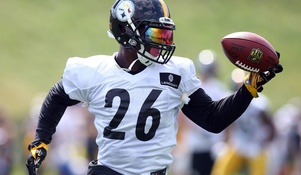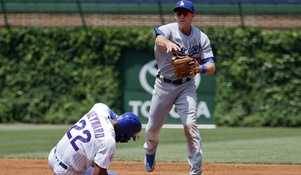2016 ALDS Preview: Red Sox vs Indians
F
or the first time since 2013, the Kansas City Royals will not be the American League Champions.
Instead, four other American League teams will battle to make it to the World Series. American League teams have won two of the last three Fall Classics. The last team to do so besides the Royals? The Boston Red Sox.
The Boston Red Sox are your 2013 World Series champions, clinching the title at home for the first time since 1918.
— ESPN Insider (@ESPNInsider) October 31, 2013
If the Red Sox hope to do what they last did in 2013, they will have to defeat the Cleveland Indians in the American League Division Series. Cleveland holds home-field advantage, meaning Games 1, 2, and 5 will be at Progressive Field, where the Indians were 53-28.
Despite that, the Red Sox have the edge. They won the season series, 4-2, including winning two of three games in Cleveland.
Additionally, the Indians are reeling from injuries. Starting pitchers Carlos Carrasco and Danny Salazar will not pitch in the Division Series. Carrasco broke a bone in his hand three weeks ago and is out for the season. Salazar could return this postseason, but a troubling forearm kept him off of the Division Series roster.
Danny Salazar will not be on Indians' ALDS roster. Francona: "He's not ready to pitch in a game." Could be factor for ALCS, if they advance.
— Zack Meisel (@ZackMeisel) October 4, 2016
Without Carrasco and Salazar, the Indians’ rotation is in trouble. Cleveland finished the regular season with the seventh-best team ERA (3.84). Part of that was because of Carrasco (11-8, 3.32 ERA) and Salazar (11-6, 3.87).
Corey Kluber (18-9, 3.14) is the clear ace of the Indians but without his No. 2 and 3 starters, manager Terry Francona will need Trevor Bauer (12-8, 4.26) and Josh Tomlin (13-9, 4.40) to elevate their game.
Without Carrasco and Salazar, Cleveland no longer has the pitching advantage. Boston has to get the nod because of Rick Porcello (22-4, 3.15) and David Price (17-9, 3.99). Porcello is a Cy Young candidate and Price, though coming off of a rough regular season by his standards, is still better than Tomlin and Bauer.
However, Price needs a bounceback postseason after going 1-2 with a 6.17 ERA in four games last October as a Toronto Blue Jay. He gave up at least three runs in all four of his starts and made it past the sixth inning only once. His final two outings were dreadful; Price gave up a combined eight runs on eight hits in two losses to the Royals in the ALCS.
David Price: Playoffs is not about proving my worth, it's about winning - #RedSox https://t.co/Az9tmd6CqL
— CSN New England (@CSNNE) September 29, 2016
If Price can go six innings and allow three runs or less in presumably his only Division Series start, he’ll be doing his job.
While the Red Sox get the edge in starting pitching, they do not have as good of a bullpen as the Indians. If the Red Sox don’t have a lead after six innings, then they are in trouble. The trio of Dan Otero, Andrew Miller, and Cody Allen lessens the burden of the Indians’ depleted rotation.
Offensively, not many teams can match the Red Sox, who led MLB in average (.282), runs (878), hits (1598), total bases (2615) and slugging percentage (.461).
Both teams like to hit long balls, but here’s the difference between the two. Neither of Cleveland’s two 30 home run hitters, Carlos Santana and Mike Napoli, hit .260. All three of Boston’s 30 home run hitters; David Ortiz, Mookie Betts, and Hanley Ramirez; hit at least .286, while Ortiz and Betts hit .315 and .318, respectively.
The Indians still have plenty of impressive hitters; Jose Ramirez leads a lineup that seems to get the big hits at the right time. In 71 at bats, Ramirez hit .366 with two outs and runners in scoring position.
Meet the most clutch hitter in baseball: #Indians' Jose Ramirez @mrlapara https://t.co/xTWMIQ82ge
— Emily Cabrera (@Emm_Cabrera) September 29, 2016
Add in on-base machines Francisco Lindor and Tyler Naquin, and the Indians have a formidable offensive attack. They may not hit as many home runs at the Red Sox, but Cleveland will increase pitch counts readily, thus tiring pitchers and leading to more base hits and walks.
This is a tight matchup. However, the Red Sox are the hotter team, winning 19 of their final 29 games, and the Indians keep losing players to injury. Boston’s rotation won’t be dynamite, but it’ll be better than Cleveland’s. Prediction: Red Sox in four.






